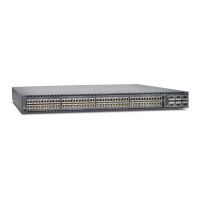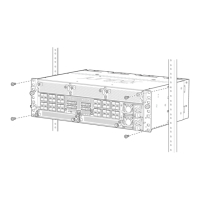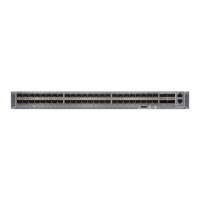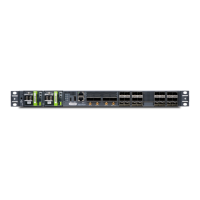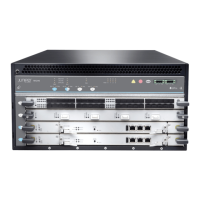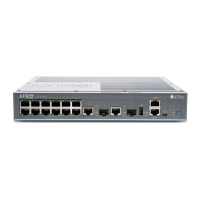Table 28: Supported SONET Standards (continued)
SpecificationsStandard
Monitoring
AvailableConnector
Transceiver
TypeModel Number
•
SONET/SDH
OC192/STM64 Optical
Interface Specifications
SONET/SDH
OC192/STM64 Short
Reach (SR-1)
YesLCXFPXFP-10G-L-OC192-SR1
•
SONET/SDH
OC192/STM64 Optical
Interface Specifications
SONET/SDH
OC192/STM64 Long
Reach (LR-2)
YesLCXFPXFP-10G-Z-OC192-LR2
SONET OC768/STM256 Specifications
•
SONET/SDH
OC768/STM256 Optical
Interface Specifications
SONET/SDH
OC768/STM256 Short
Reach (SR)
YesSCFixedPD-1OC768-SON-SR
Understanding Fiber-Optic Cable Signal Loss, Attenuation, and Dispersion
This topic describes signal loss, attenuation, and dispersion in fiber-optic cable. For
information about calculating power budget and power margin for fiber-optic cable, see
“Calculating Power Budget and Power Margin for Fiber-Optic Cables” on page 77.
•
Signal Loss in Multimode and Single-Mode Fiber-Optic Cable on page 76
•
Attenuation and Dispersion in Fiber-Optic Cable on page 76
Signal Loss in Multimode and Single-Mode Fiber-Optic Cable
Multimode fiber is large enough in diameter to allow rays of light to reflect internally
(bounce off the walls of the fiber). Interfaces with multimode optics typically use LEDs
as light sources. However, LEDs are not coherent sources. They spray varying wavelengths
of light into the multimode fiber, which reflects the light at different angles. Light rays
travel in jagged lines through a multimode fiber, causing signal dispersion. When light
traveling in the fiber core radiates into the fiber cladding, higher-order mode loss results.
Together these factors limit the transmission distance of multimode fiber compared with
single-mode fiber.
Single-mode fiber is so small in diameter that rays of light can reflect internally through
one layer only. Interfaces with single-mode optics use lasers as light sources. Lasers
generate a single wavelength of light, which travels in a straight line through the
single-mode fiber. Compared with multimode fiber, single-mode fiber has higher
bandwidth and can carry signals for longer distances.
Exceeding the maximum transmission distances can result in significant signal loss, which
causes unreliable transmission.
Attenuation and Dispersion in Fiber-Optic Cable
Correct functioning of an optical data link depends on modulated light reaching the
receiver with enough power to be demodulated correctly. Attenuation is the reduction in
power of the light signal as it is transmitted. Attenuation is caused by passive media
Copyright © 2017, Juniper Networks, Inc.76
ACX1000 and ACX1100 Universal Access Router
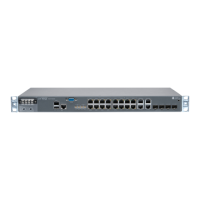
